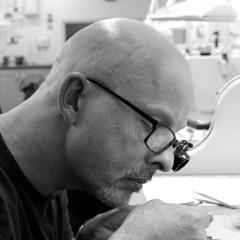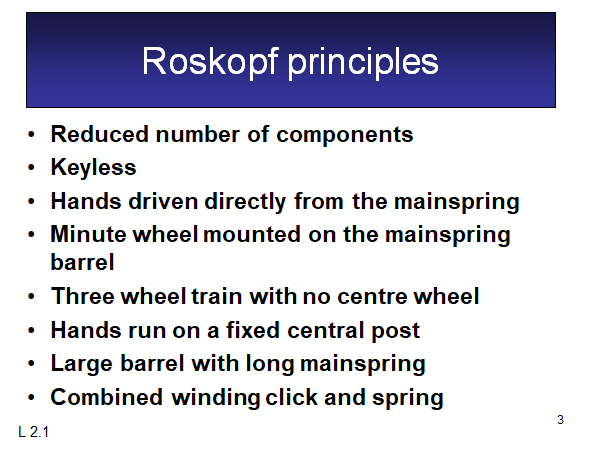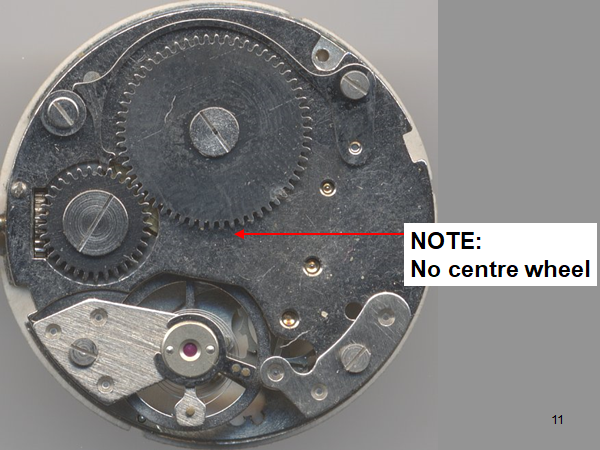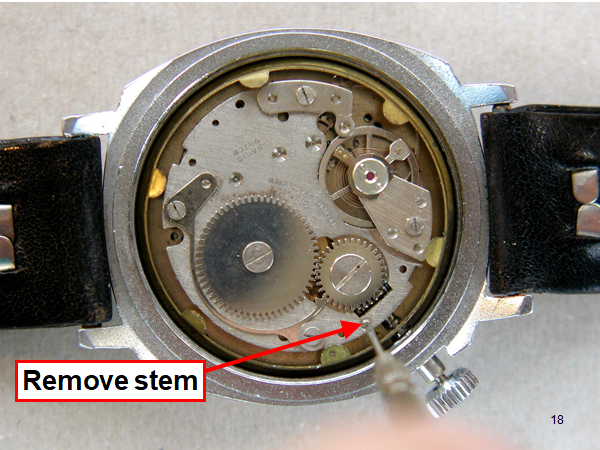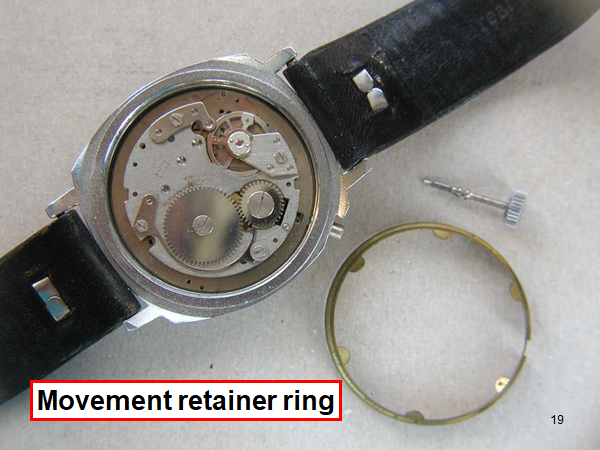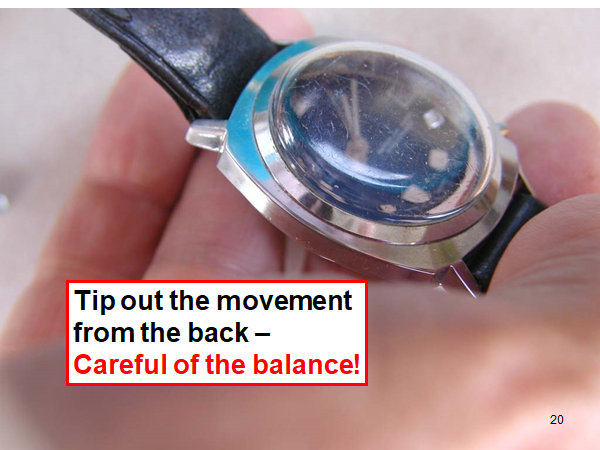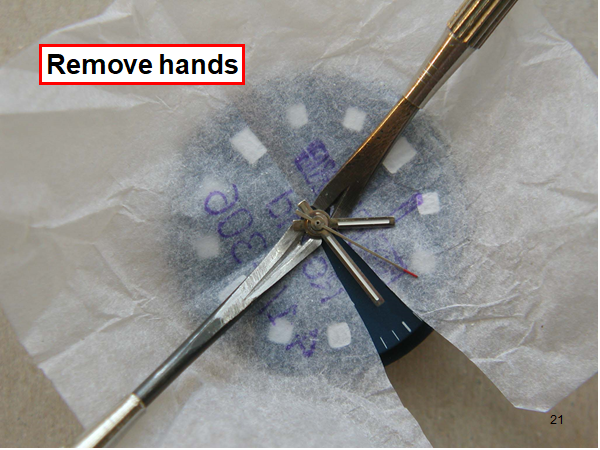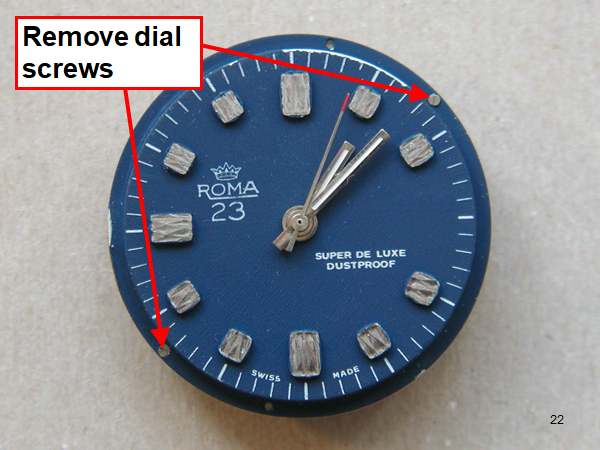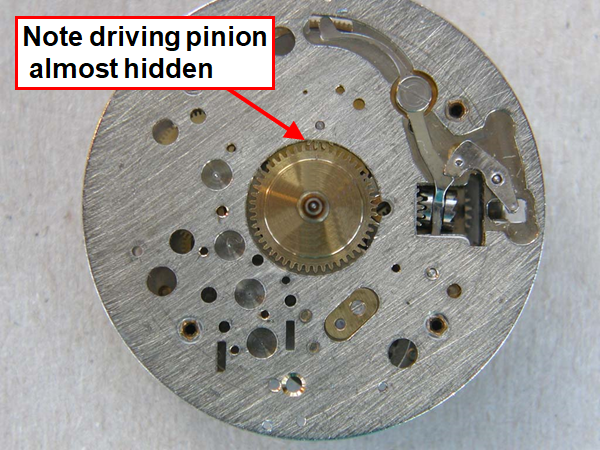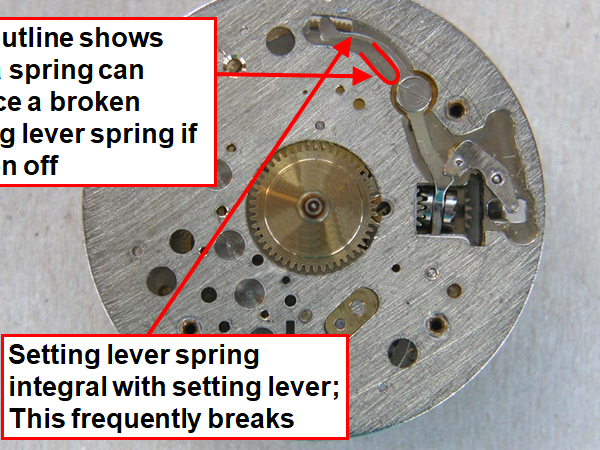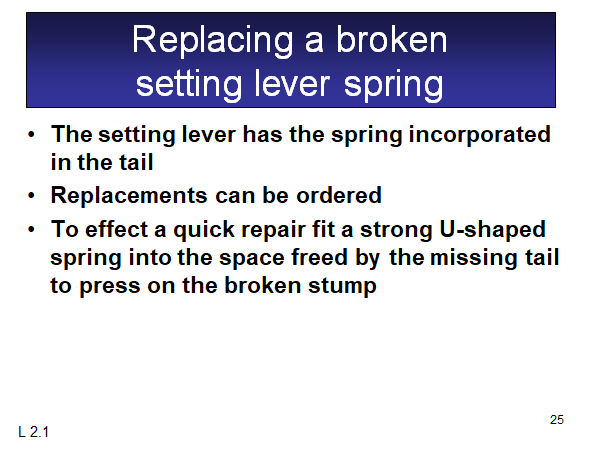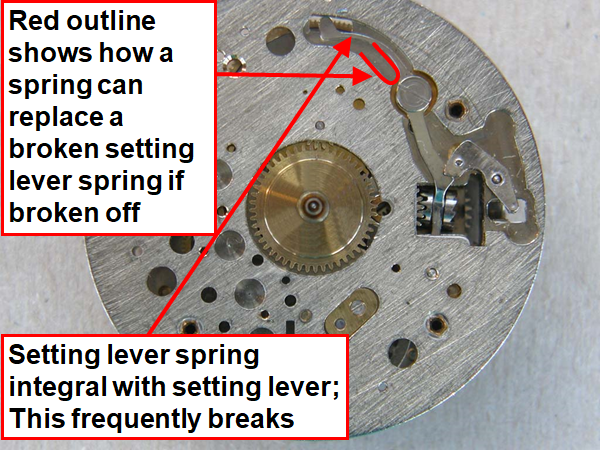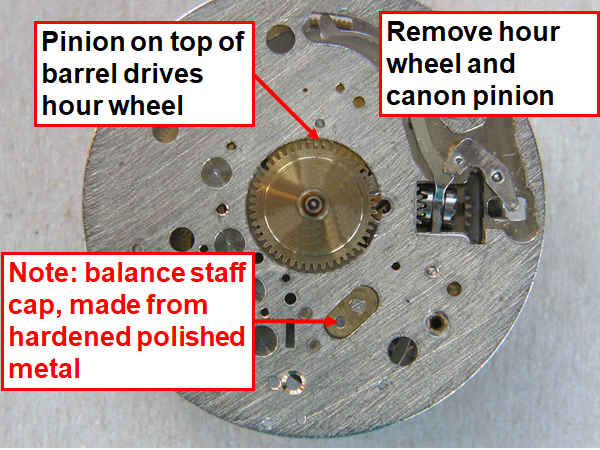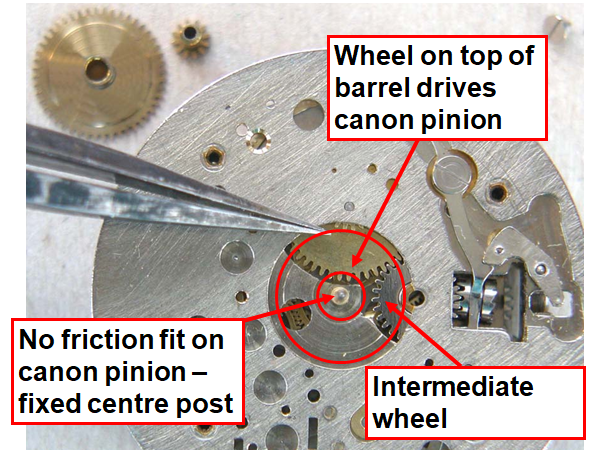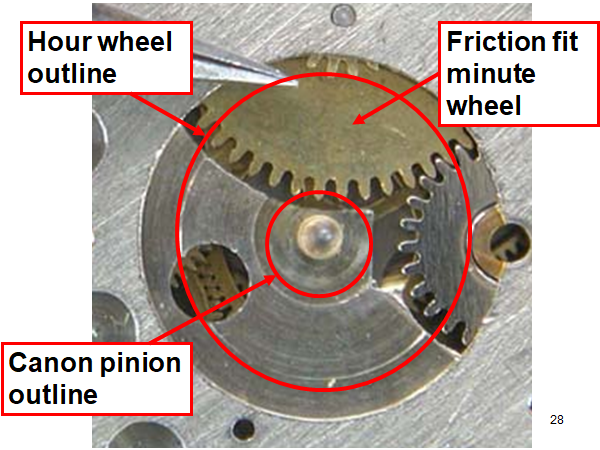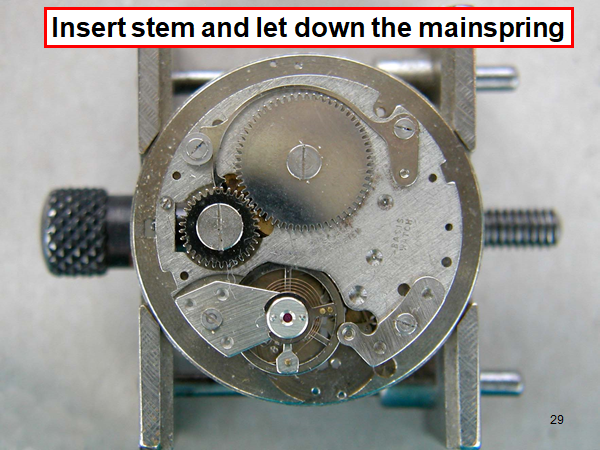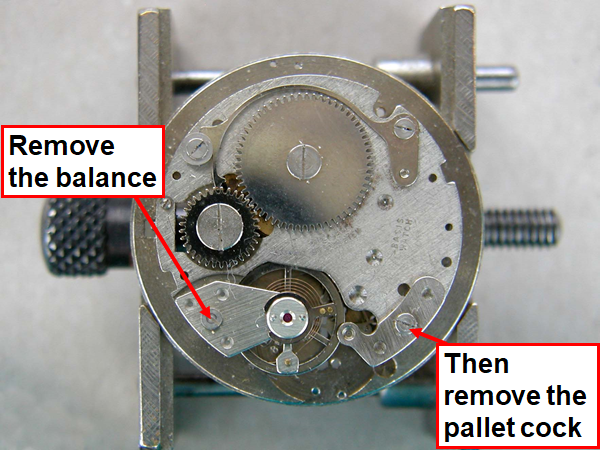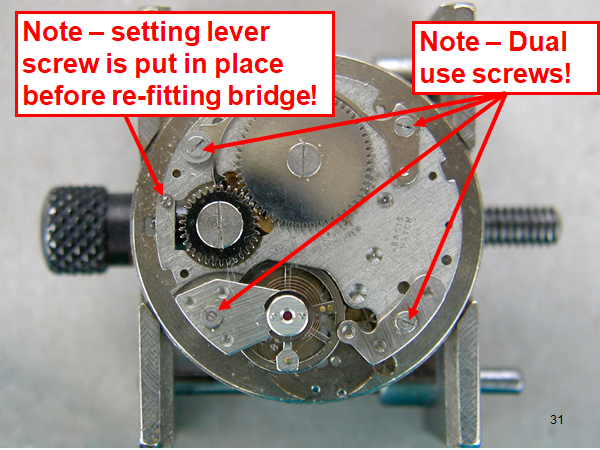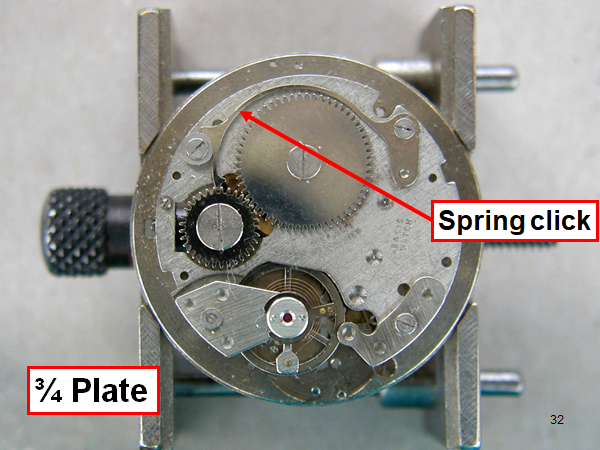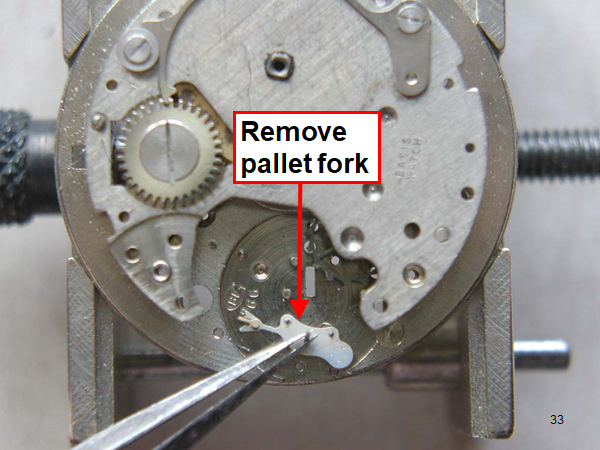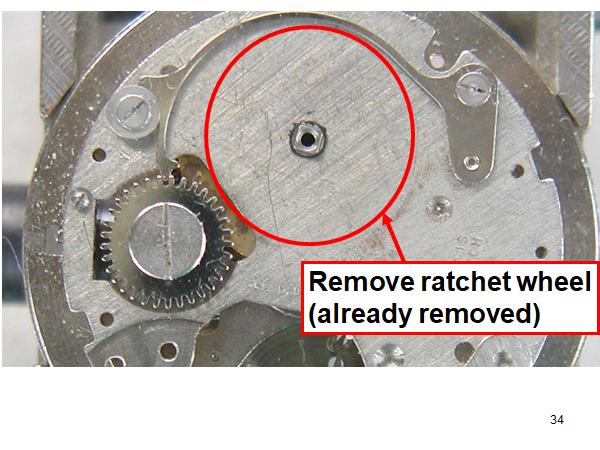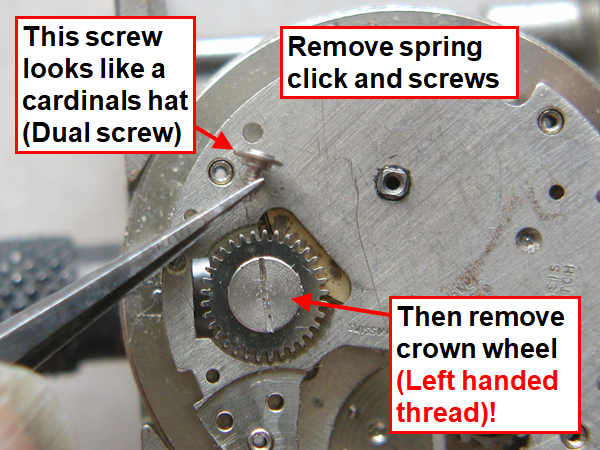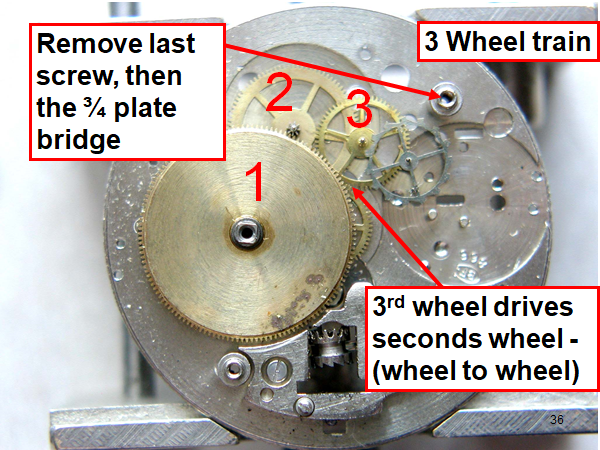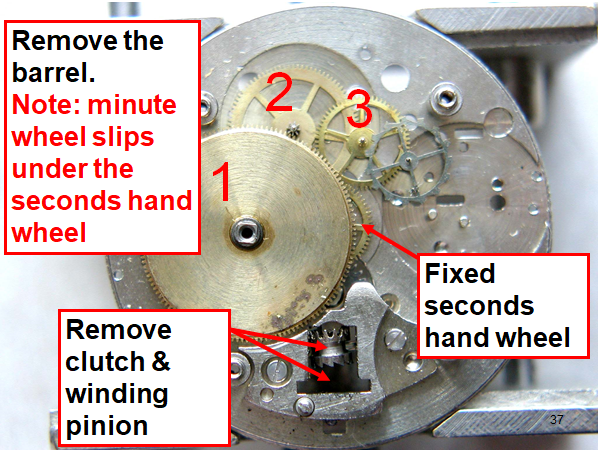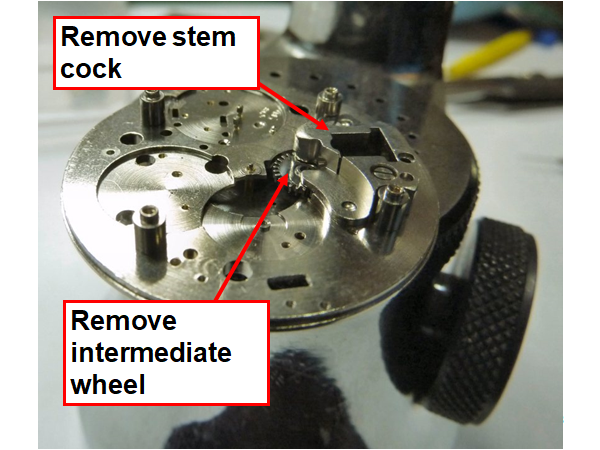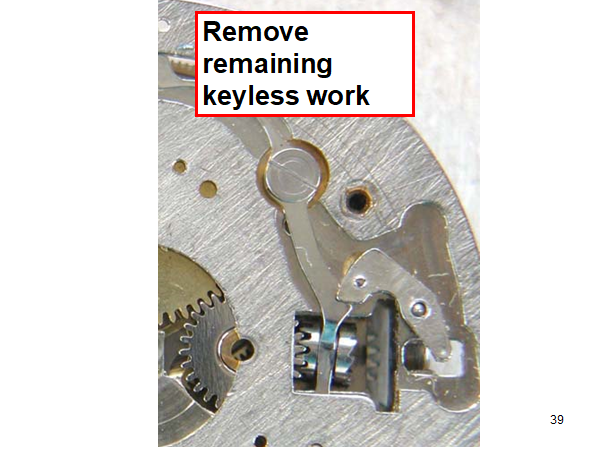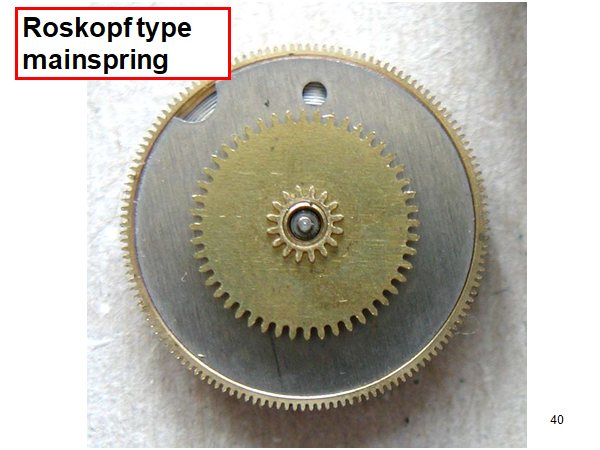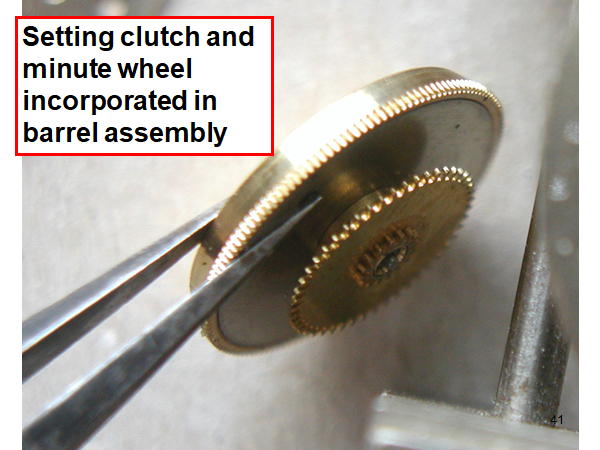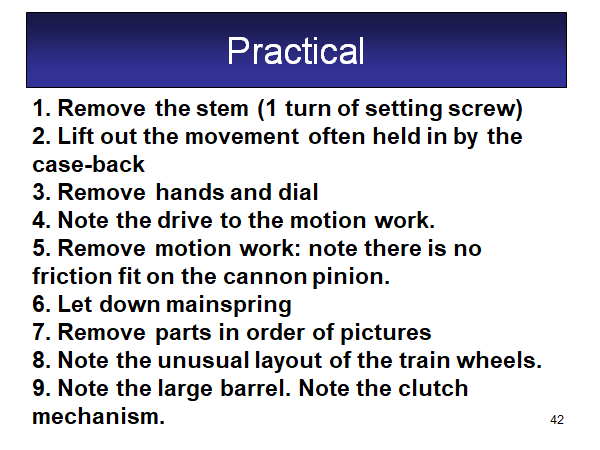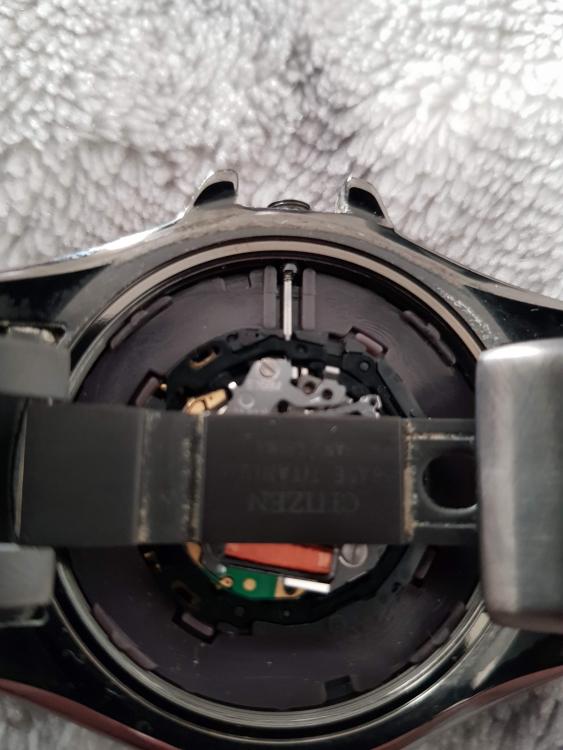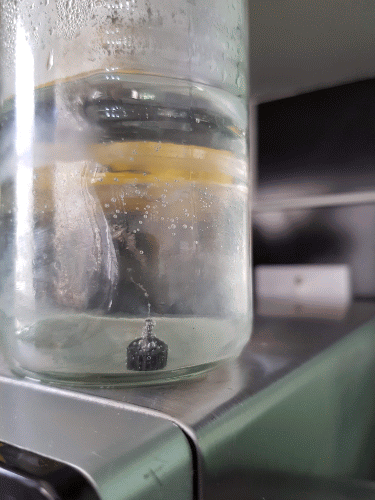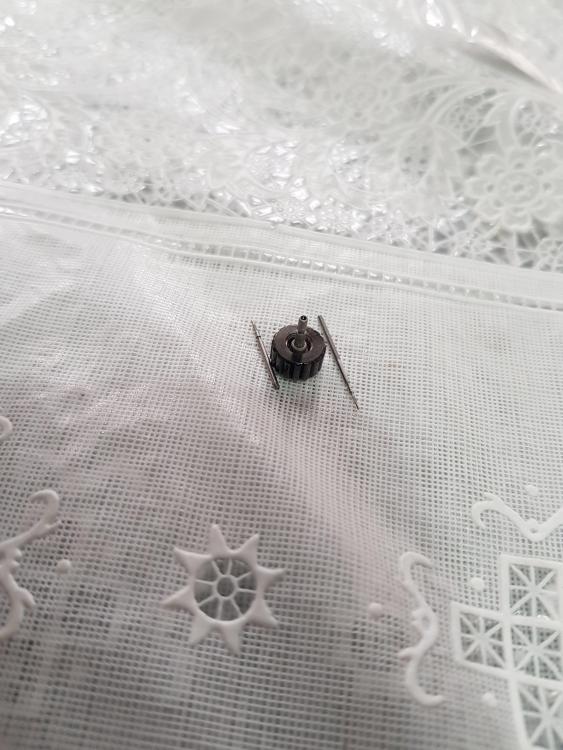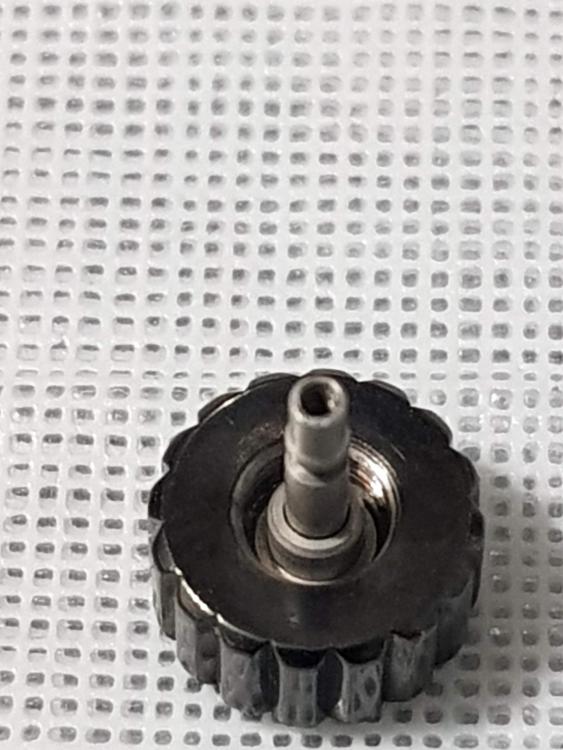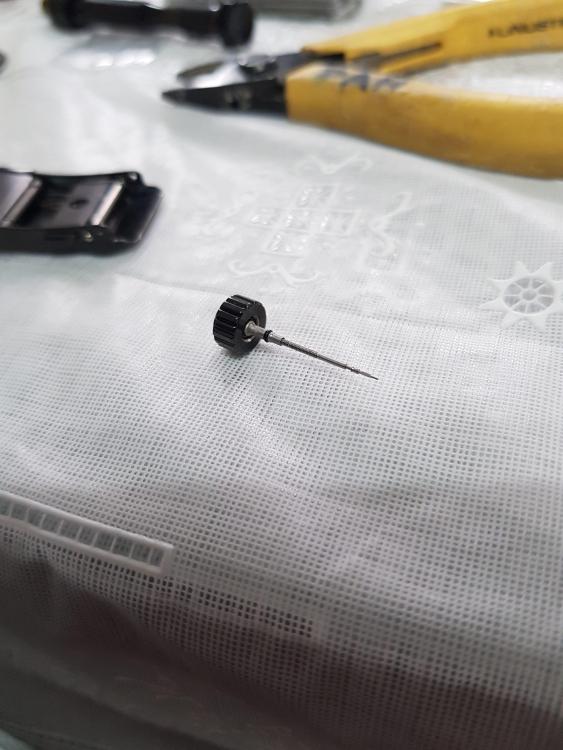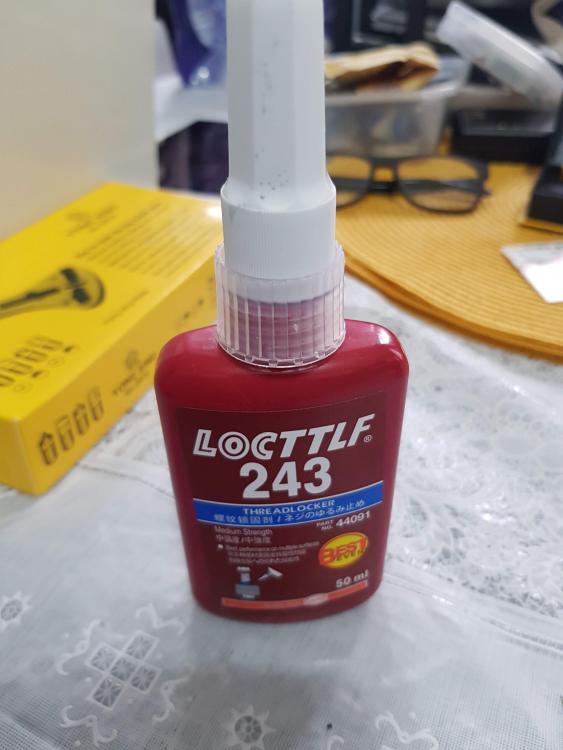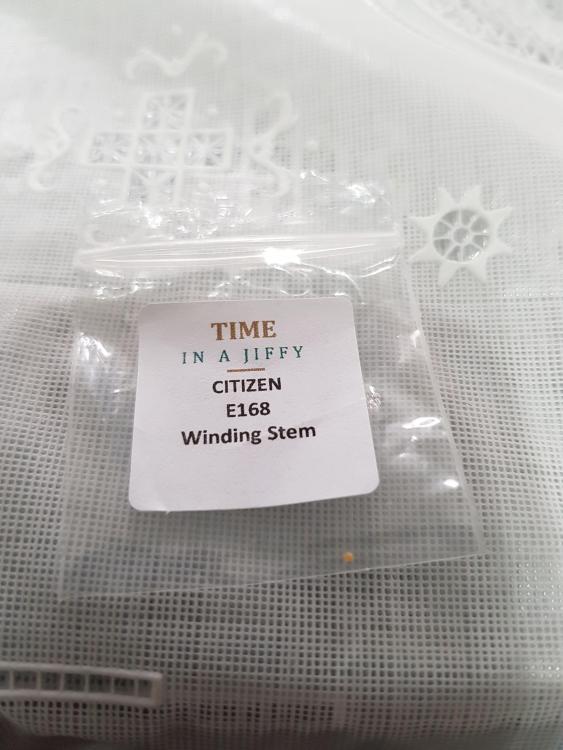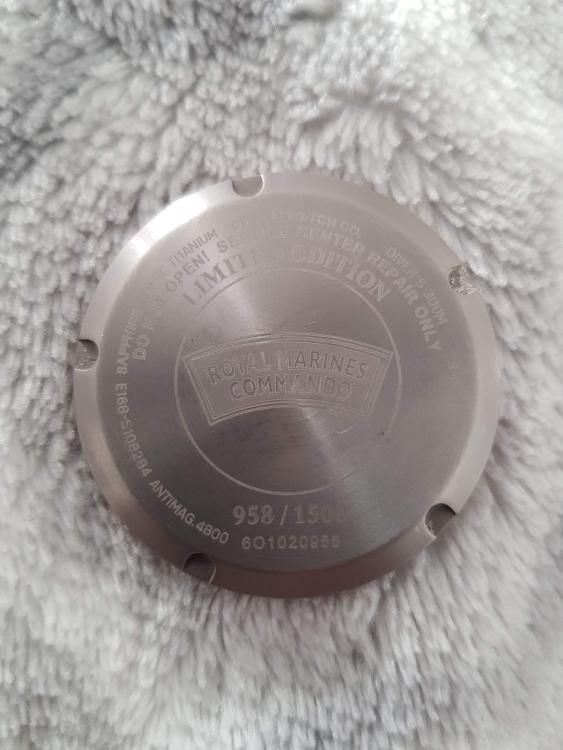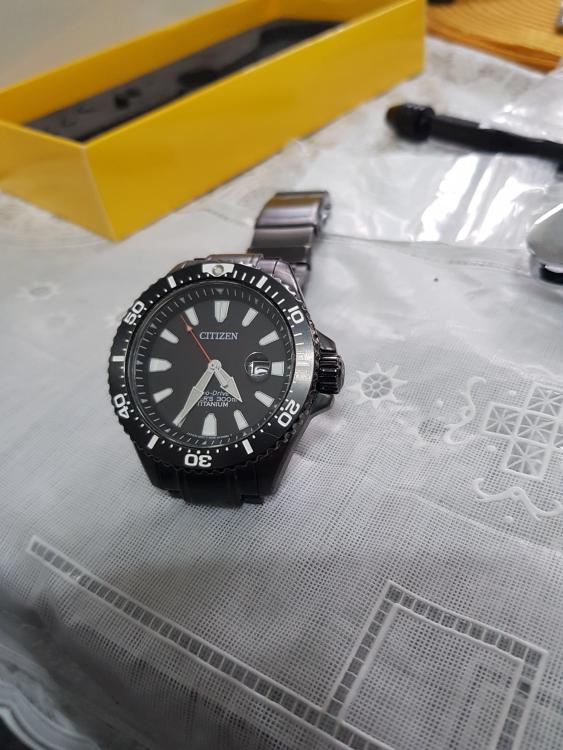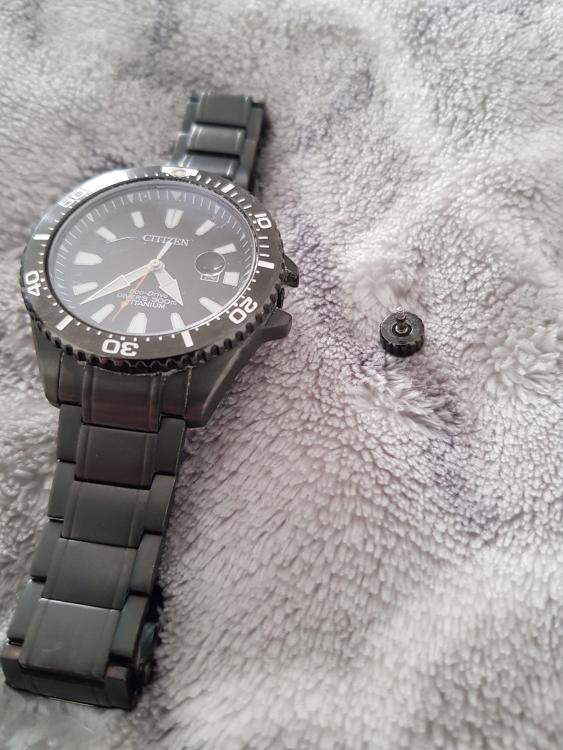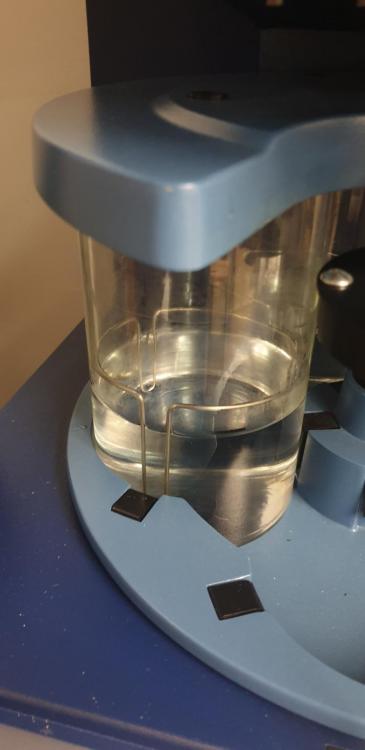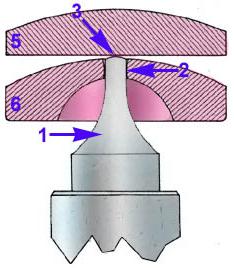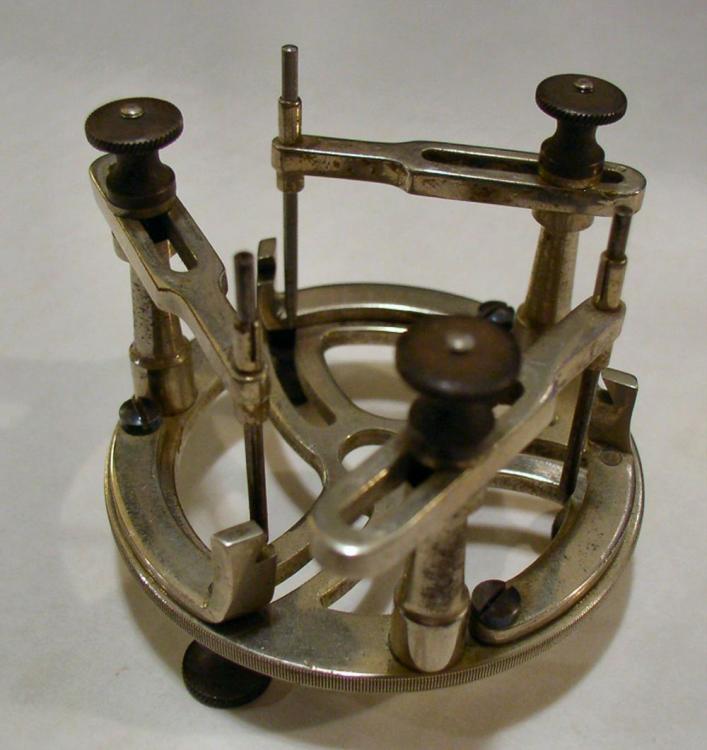Leaderboard
Popular Content
Showing content with the highest reputation on 10/04/21 in all areas
-
Hello, for me it is a bit painful to find the right english word for the technical terms used here. CGS numbers were invented by 'the hairspring industry' (in fact profs Guillaume and Donat) to overcome old arbitrary classifications like 'strength number' and 'size number' to get hairsprings calculable in the CGS (the units) system. That helped to quickly and exactly determine a needed spring instead of 'trying' a spring. CGS number is a parameter, not a torque dimensional. To get the torque*, you have to divide the CGS number by the squared diameter of the hairspring. * you get the 'deflecting force' D, eqivalent to the 'spring constant' of linear springs. Torque M = D * angle(rad). D is the torque @ 57deg deflection. If you alter the length/diameter of a given hairspring, you will also alter its 'D' - so it is not appropriate to generally specify a hairspring. CGS number is however. The formula to find the right hairspring was posted by dadistic already. However you need to have one hairspring with any known CGS number. Tables help to come into the ballpark, but are not determined enough. Don't know if Joe wants to go that route, but I compressed the procedure in the attached pdf. If you calculated the correct CGS #, next imho bigger issue is to find such spring. The British comp. may have it, but is not helpful finding it, their 'Torque' data are unclear. In contrast to me, jdm found their information sufficient, maybe he can help you. But factor 1.75 cannot be right, you were still off by some decimals compared to an expected CGS #. Frank CGS_INFOe.pdf3 points
-
Thank you for pointing out my mistake, due to superficiality. I went to look to the "stock springs list" by the British company more closely. First thing that one can notice is that the O.D. starts at 6mm, which could be right for a 12mm balance wheel, something like a 13"" mov.t! Based on that only, I suppose these are not wristwatch, and possibly not even clock hairspring. Rather, have been made for a variety of other devices, like speedometers, detonation timers, pressure meters, just like their home page says. Then looking at the quoted Torque for a same O.D. we see that it varies largely, even about 200 times for 7mm O.D. springs. Unlike what we learn from the old tables, that the CGS# is very related to the balance diameter. Another clue is the "custom springs" pages, the parameters on "how to choose a material" are not like anything related to watchmaking. Despite the oscillator instrument in the tiny picture on the home page, nothing says or suggest that these are in fact, horological hairsprings. Conclusion, IMHO it is safe to disregars this source for watch repair needs. I apologize for any confusion I may have caused when trying to compare oranges to apples.2 points
-
No, I don't think so. Otherwise that would be mentioned in the service guides, or books. These may not be the best choice, as metal can be too harsh especially in the hands of beginners. Shaped pegwood may be better, as I'm showing in this video: Also check related topic:2 points
-
Hi, I teach watchmaking to complete beginners at Epping Forest Horology Centre, close to Epping and this is one of the lessons on the BFG 866. I wanted to show my class a classic pin pallet (Roskopf) movement and how to service it, as many watchmakers won't touch these watches as they hold no monetary value. Turn the setting lever screw 1 to 1 and a half turns to release the winding stem A piece of watch paper or small plastic jiffy bag to protect the dial, whilst removing the hands The driving pinion is part of the friction fitted minute wheel on top of the barrel. This work in a similar way to a friction fitted canon pinion to set the watch hands Remove the keyless work: setting lever, held in place by the setting lever screw, screwed from the other side of the mainplate, then the yoke, which sits on top of the clutch (castle) and also the winding pinion. I have three other lessons on this movement that cover bringing the watch 'into beat' as well as taking apart the friction fitted minute wheel from the barrel, lubricating and staking back on to achieve the correct friction setting and finally how to remove the centre seconds wheel safely and refit using a staking set. Many people leave the friction fitted minute wheel on top of the barrel, not realising the amount of old grease that can't be cleaned out from it, as well as not removing the wheel of the centre seconds arbor and again not cleaning out the pipe which has old grease inside. Hope you enjoyed the tutorial? More to come....1 point
-
I recently purchased a watch off eBay with broken stem I have cleaned and then dissolved stem in alum powder and replaced with new stem movement is e168 so stem not to hard to find hope you enjoy the pics Watch back with broken stem dissolving stem in alum powder mixed with water put this jam jar in pan of boiling water on cooker ring and 10 hours later over 2 days you get a crown minus stem if crown is stainless steel. Old stem and new stem next to nice clean crown and clean crown crown with new stem cut to length and tested the loctite thread seal used and seals put back . case back cleaned and seal lubed. The watch was cleaned in ultrasonic bath before reassembly. watch all back together happy happy hope you enjoyed1 point
-
Hello everyone and thank you for having me in the group. I’ve long been interested in mechanical watches and have grown a small collection over the years, but I’ve only recently come to believe that it is possible for me to service a watch. I have a special interest in vintage Russian watches and in general they’re build like tanks, so that’s where I plan to begin my watch servicing journey. I’ve just begun Mark’s 2nd course and have the required equipment and the recommended movement in order to get started. Look forward to meeting you in this amazing forum. Warm regards from down under… John1 point
-
I just serviced a Lorsa P72 (looks nearly identical to the P75 to me). It is a 21 jewel watch where the additional jewels (17+4) are simply cap jewels on the train wheels (third and fourth). Do they do any good, or just get the jewel count up? BTW, when assembling the watch, I put the wheels in first (planning to put the cap jewels last). I think it was the third wheel that was just flopping around...would not seat into the pivot holes. Well, that is because the design depended on the cap jewel to reduce travel of the pivot through the plate. Once the cap jewel was in place...all was well. This was another watch with the MT Antichoc system. This time, I was ahead of the game and knew how to handle them far better. What was a three-hour job (the last time) was under thirty minutes...and much less stress. My journey continues!!1 point
-
Brass hole or brass bushing rings a bell. There were even brass inserts that you then dril the hole in as you need. A question that one normally pay attention to or think might be asked. Regs1 point
-
I'm attaching a couple of articles by Andre Donat describing the hairspring numbering system, these are from the 1930's . Unfortunately for me, they are in French, of which I have none, so I am working on a (machine) translation. They numbering paper was retrieved from here - http://articles.adsabs.harvard.edu/full/seri/AFChr/0004//0000254.000.html And the other one from the same place, but I've misplaced the link. When I have a usable translation I'll post it in a new thread. 1934AFChr___4__297D.pdf 1934AFChr___4__233D.pdf1 point
-
1 point
-
Exactly! Having read their homepage, I suspect this company just sells inherited stock and all specialist with the needed knowledge retired long ago. Frank1 point
-
I would imagine the British Springs folks can give a conversion from their numbers to CGS. I assumed their numbers were CGS, and who knows, maybe they are but they call it something misleading? As a manufacturer they must know the difference and can tell you.1 point
-
Hi John A wipe down of the post with oil/light grease is a good idea to keep the motor slide free. Making the wavebreaksrs/baffles sounds like there will be a raid on the kitchen utensil front. They are usually fitted to the lid under the motor so when the motor is inserted into the jar the breakers are also inserted and the lid seals the jar to avoid spillage when in use.1 point
-
There have been some pretty complex baffles made, but in my older Greiner ACS 900 they are very simple, bent wire, and work fine. I think from the pic you can get the gist. Later ones are expanded metal sheet that wraps around the inside of the jar; I much prefer these as the jar and baffle should get a thorough cleaning when changing solutions and cleaning the expanded metal must be a bear.1 point
-
Due to the delicate construction of these shock springs I would guess in the professional world they are replaced, but as you have discovered that fitting them in reverse allows for a tight fit. In the amateur world I guess thats acceptable as the amateur repairer does not have the resources of the professional. Repeated fitting and removal will eventually destroy the spring.1 point
-
Hi If you have read the many posts on the site regarding cleaning and what to use and not to use, It wouls seem thats every body has their own opinion. The method you are using will be ok. The main thing is to dry the components thoroughly and there will be no rust. rust only occurs when the drying process has not been don properly. If you are happy with the results you get from your method, continue to use it.1 point
-
With the rising cost of heating gas, this can be a costly way. One easier way to keep a constant temperature (doesn't have to be boiling, 50 - 60 C will suffice) is to use an ultrasonic cleaner with heather, keeping the U/S off. There is also another quicker way to remove stems quickly and from crowns of any material, that is to cut around 1mm of the crown around the stem, and then grab it with serrated pliers. It is quite easily done on the lathe, there are also small devices made for the purpose, and I think it can also be done manually with a piercing saw and some patience.1 point
-
Correct. Now, let's recall the definition of force in all units systems: the force that would give a free mass of one gram an acceleration of one centimetre per second per second. Since you guys may be bored with Wikipedia, I'll give a difference source this time: https://www.britannica.com/science/dyne Now, as I mentioned before, there is a time component in the physic's definition of force, but when it comes to measuring the strength of an hairspring, or even a mainspring, time (or acceleration) is not practically involved. That is because we're dealing with largely elastic objects, for which, in the end, we're looking to find the https://en.wikipedia.org/wiki/Elastic_modulus Well, those did come up with the "CGS thing" is the hairspring industry, when they switched from the "ancien" (means old in French) still present the table posted by dadaistic, to a coherent system of units, like CGS. You can calculate the "strength" - aka elastic modules of a torsion spring, or you can measure it on an actual object, and they should be reasonably close. And if you need to convert to the "British company" units, again I believe the simple proportion is: 1 / 57 = x / 100, that is multiply any "CGS value" by 1.75. If I'm saying something incorrect, my apologies and I'll be happy to learn better. I think we can discuss units and force until blue in the face but that will not make any hairspring to appear on your bench. So as mentioned above one would need to order a range which likely cover the application, and start from there. It would be crazy to make right away a large order of a single type and expect to be correct.1 point
-
Thanks noirrac1j, Much appreciate the info, got out my loupe and found the Omega logo on the crystal, I would never have found that if you hadn’t pointed it out. Much happier now as I really like this style of watch and have wanted an Omega for years. Graham1 point
-
Those one off tools are a curse! They always seem to fall under two categories: Use it once and never use it again, or use it once, need it later and forget you already have it, and order it a second time, use it, then discover you already had one when you go to put it away to never be used again.1 point
-
I found them a touch to big as well so I made one out of pegwood. Very easy to make if you have a lathe. Cut a piece off flush drill an appropriate hole and then file the notches required with a screw head file. Pegwood is far more tactile than metal.1 point
-
If you want to try a diy solution, my mentor told me to use the brass tube from an old spring bar and file 3 notches in it. I haven't tried that yet because I ordered a set of Chinese tools from AliExpress. It's almost a month already and still no sign of them.1 point
-
Baumgartner 866 Barrel friction fitted wheel .pdf Here is the last instalment of the BFG 866 lessons I wrote. This lesson shows how to remove the friction fitted minute wheel from the barrel cover, clean, lubricate and adjust the friction setting, so when in 'hand-setting' mode, the hands set correctly without being too sloppy or too tight when turning the crown. Some overlook removing this friction fitted wheel, but as you will see, there is a lot of old grease that doesn't help when left to congeal. Enjoy...1 point
-
From a website I apparently can't link to... TLDR; It eliminates the friction of(/need for) the shoulder of the pivot shaft from resting on whichever jewel is lower. Also, provides tighter end shake. Also provides hours of fun crawling around on the floor looking for end jewels that pinged off into the ether. Hours! Fun...1 point
-
Here's a little story that should put a smile on your dial https://www.abc.net.au/news/2021-01-01/horology-reuben-schoots-handmaking-mechanical-watch/129927181 point
-
For full plate watches you really need an escapement matching tool. This is sort of a movement holder and depthing tool in one; there are 3 (sometimes only 2 but 3 is best) arms that carry runners that can be accurately aligned with the balance, escape wheel and pallet fork pivot locations. The plate is put in place (well, upper plate), then the components with one end supported by a runner. You can then check the escapement functions in full view.1 point



